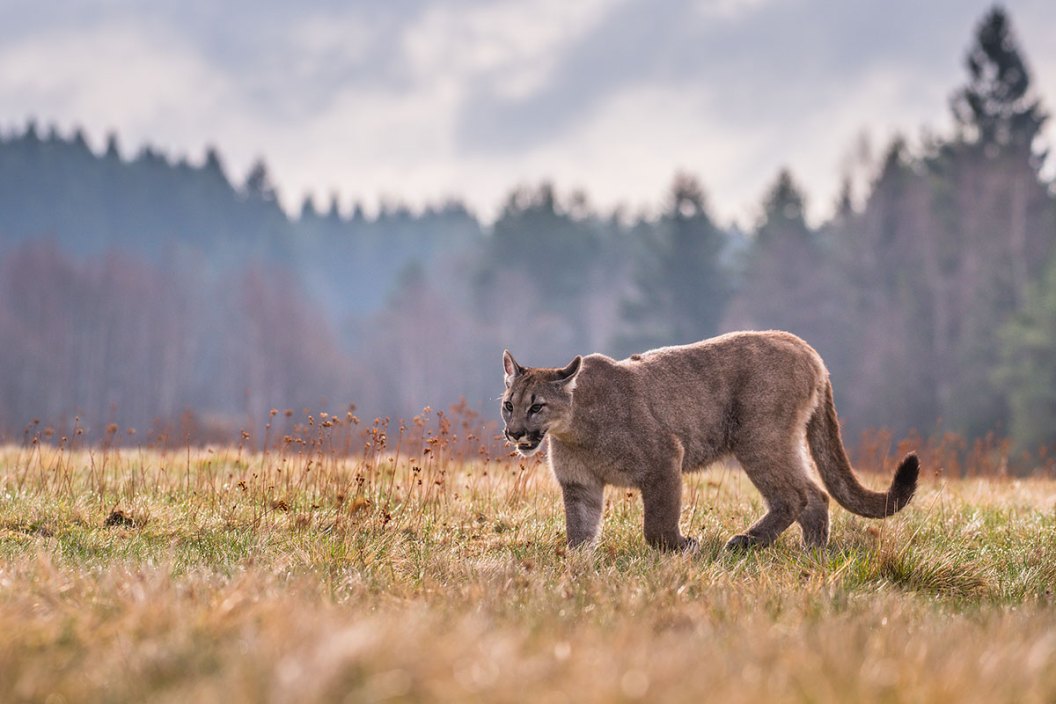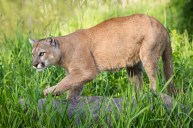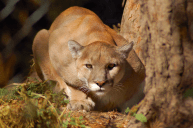One of the most misunderstood carnivores in both North America and South America, the mountain lion is the largest cat on the entire continent—and they're as fierce as they are majestic.
While their home range once covered the entire continental United States and Canada, mountain lion populations have greatly decreased, leaving sustainable numbers only in western states, like California, Utah, and Colorado. A small population, known as the Florida panther, persists in that state, but confirmed sightings in other eastern states of America are extremely rare.
Still, you may want to know more about what you're looking at should you encounter a mountain lion in the wild, and how big mountain lions get. Here's everything you wanted to know about these wild cats.
The Basics
The predatory cat's habitat can be a variety of ecosystems, anywhere from deserts to coastal forests and sea level to 10,000-foot elevations. However, mountain lion sightings commonly happen in steep, rocky canyons or mountains, especially if there is a deer population nearby.
The large animals are called by many different names, depending on where they are found. For example, "mountain lion" and "cougar" refer to the same animal. You'll also hear people calling them catamounts, pumas, or panthers, but they're all the same species.
They're also part of the greater Felidae family, which comprises every cat species from bobcats in North America to cheetahs, jaguars, and leopards. Ironically, despite being very large cats, mountain lions aren't actually considered a "Big Cat", like tigers and lions, because of their inability to roar. Instead, they purr, squeak, growl, meow, and occasionally scream.
Just like their domestic feline brethren, cougars are known to be sneaky and solitary and they tend to avoid humans at all costs. Even in places with known cougar populations, mountain lion sightings are rare, and mountain lion attacks are even rarer. Because of this, it can be hard to imagine just how big these wild cats are.
How Big is a Full Grown Mountain Lion?
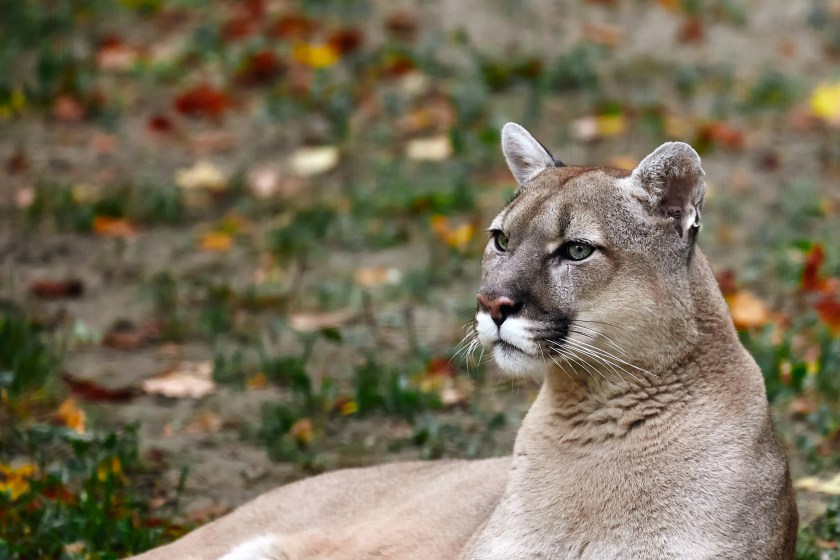
Getty Images, Evgeny555
Puma concolor, or felis concolor, as they're known by their scientific name, mountain lions vary in size and color, from tawny to grey, depending on where they're found and the type of subspecies. However, most stand about 30 inches high at the shoulder. That's a lot bigger than many domestic animals. To put into perspective, consider that a large German shepherd dog stands between 23 and 26 inches high, and house cats generally weigh around 10 pounds.
Male cougars are typically larger than females and grow up to 8 feet long including their long tail, whereas adult females routinely reach about 6.5 feet. Weights vary from 100 to 220 pounds, though it's very rare to see even a male mountain lion break that 200-pound threshold; the average adult male is 150 to 170 pounds. The majority of photos that circulate online with claims of weights in the 250- to 275-pound range can usually be chalked up to urban legend, as the posters never seem to have an official weight.
While many factors determine mountain lions' size, the one with the most influence is their habitat. There's usually a direct correlation between the animal's size and the health of local deer populations, as they serve as a cougar's favorite prey. Because deer are often smaller in size down south in places like Florida and Texas, so are the mountain lions. But up in areas like British Columbia or Yukon, cougars carry a little more weight, as do their prey.
How Big is a Mountain Lion Compared to a Human?
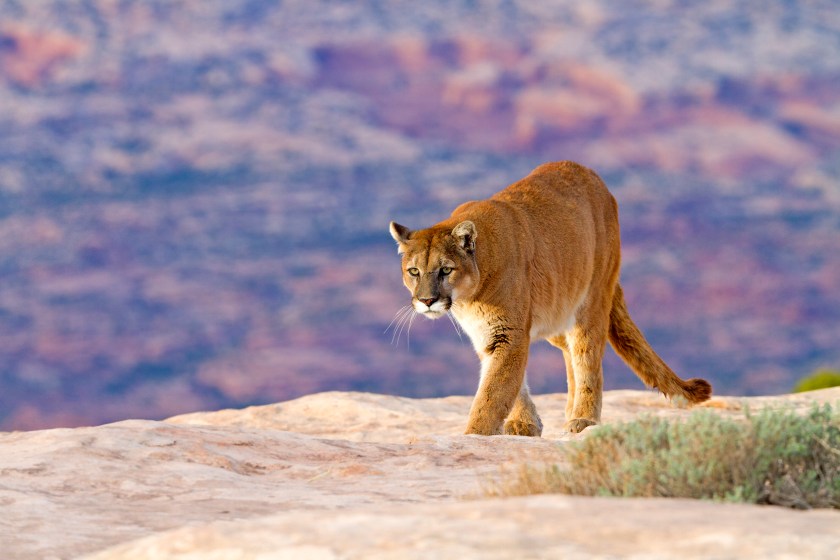
Getty Images, Michel Viard
Humans are taller than mountain lions standing on all fours. However, if a human were to lie down, at up to 8 feet long including tail, mountain lions would be longer than even the tallest people. And if standing on their hind feet, cougars are far taller than humans.
Cougars also can easily outweigh many human adults, and their paws are about an inch bigger than most human hands.
Is a Cougar or Mountain Lion Bigger?
As mentioned above, cougars and mountain lions are the same animal, as are catamounts, pumas, or panthers—the name used depends mainly on the region and the language spoken there. Their size also varies depending on the region, but they're all the same species. Therefore, cougars and mountain lions are the same size.
What Is the Largest Mountain Lion on Record?
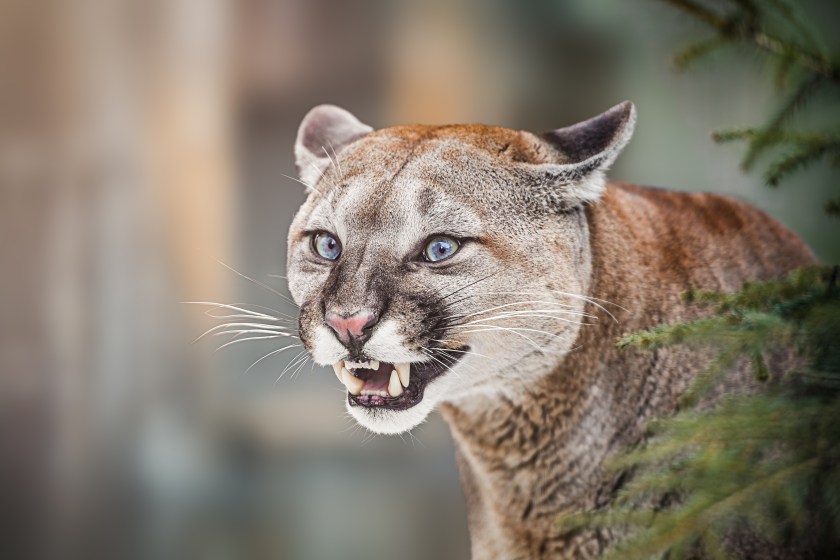
Getty Images, Zelenenka
The largest mountain lion ever recorded, according to the National Park Service, weighed 276 pounds. Another record-breaking mountain lion was taken in British Columbia in 1979 by Douglas E. Schuk. The skull of this cougar scored 16-4/16th points as recorded by the Boone and Crockett Club. but cats these sizes are extremely rare.
What Do Mountain Lions Eat to Get so Big?
Mountain lions, like most wild cats, primarily eat meat. The exact meat they eat depends on where in North and South America they are, and in what ecosystem they are living, but they will go after just about any prey animal. The cougars will eat anything from raccoons to coyotes, bighorn sheep, and even beavers and porcupines. Their scat reflects their meaty diet, often containing hair, feathers, and bone.
READ MORE: How Big Are Wolves? For Starters, Way Bigger Than You Think
